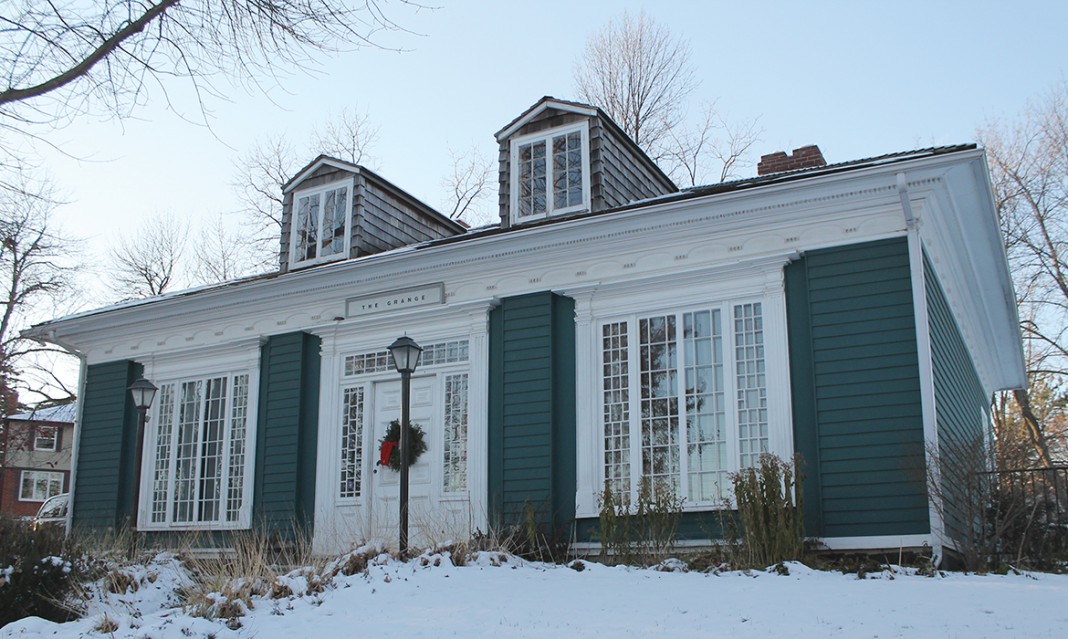Tucked into the side of Dundas Street West near Mississauga Road, the Grange serves as the headquarters of Heritage Mississauga, a local history organization, and embodies the organization’s purpose through its own history. Inside, the Grange is a museum, library, and office space all in one. There are showcases stuffed with artifacts, magazine racks packed with publications, walls draped in art, and a library stacked with books welcomed me.
Chief Justice John Beverley Robinson of Upper Canada built the Grange in 1828 in the Ontario Regency style of architecture. The building frequently changed hands after 1832, each owner adding to its structure and history. About 11 different owners preceded the Adamson family, the longest-lasting owners of the Grange. The Adamsons cultivated an orchard, stabled ponies and racehorses, and veneered the building in brick. The nickname “Robinson-Adamson House” reminds us how the Adamson family turned the Grange into a home. The Cadillac Fairview Corporation acquired and subsequently deeded the Grange to the City of Mississauga in 1978. The Ontario Heritage Trust named the Grange a “significant historical and architectural landmark”. In 2004, the city rented the Grange to Heritage Mississauga, who eventually renovated it into offices.
“The fireplace, the trim, the windows, and the doors are all original to the building,” said Matthew Wilkinson, Heritage Mississauga’s historian and a UTM alumnus. “In 1979, when this building was renovated […] it was renovated as modern office space. If we could move back in time, we would probably do things a little differently. So we come in now and we are trying to bring back the heritage feel.”
Heritage Mississauga primarily answers inquiries from the public or city staff. They fulfill about 500 inquiries every year on the subject of Mississauga’s history. The organization also hosts numerous events and publishes a book every five years, a quarterly newspaper, and journal articles. Students who are interested in volunteering with the organization can find and submit a simple form on their website, heritagemississauga.com. They already partner with UTM in a number of programs, including guest lectures, and they founded the fourth-year internship in history course available through the Department of Historical Studies.
“They all go through me,” said Wilkinson, who supervises all student research at Heritage Mississauga. “In 2006, I was one of the people that really pushed for the student internship projects with UTM. We provide 200 hours of research time for students enrolled in the course.”
When asked about the value of studying local history for students, Wilkinson says, “My general answer is everyone, regardless of where they are in life, looks for a sense of belonging, a sense of place, a sense of understanding where they fit in time and place. Seeing built heritages around us in the landscape features […] We may not necessarily know or even want to know their story, but they become indelible parts of our understanding of the community we live in.
“If you can develop a sense of place, particularly at a young age, you can very easily translate that into a pride in that place,” he continued. “If you can develop it into a pride of a place, then now all of a sudden you’ve got a community that cares about itself.”



